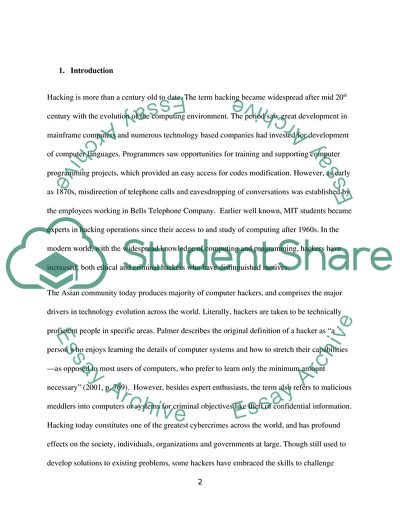Cite this document
(How has Hacking and the Motivation of Attackers Evolved Research Paper Example | Topics and Well Written Essays - 3000 words, n.d.)
How has Hacking and the Motivation of Attackers Evolved Research Paper Example | Topics and Well Written Essays - 3000 words. https://studentshare.org/information-technology/1849842-how-has-hacking-and-the-motivation-of-attackers-evolved
How has Hacking and the Motivation of Attackers Evolved Research Paper Example | Topics and Well Written Essays - 3000 words. https://studentshare.org/information-technology/1849842-how-has-hacking-and-the-motivation-of-attackers-evolved
(How Has Hacking and the Motivation of Attackers Evolved Research Paper Example | Topics and Well Written Essays - 3000 Words)
How Has Hacking and the Motivation of Attackers Evolved Research Paper Example | Topics and Well Written Essays - 3000 Words. https://studentshare.org/information-technology/1849842-how-has-hacking-and-the-motivation-of-attackers-evolved.
How Has Hacking and the Motivation of Attackers Evolved Research Paper Example | Topics and Well Written Essays - 3000 Words. https://studentshare.org/information-technology/1849842-how-has-hacking-and-the-motivation-of-attackers-evolved.
“How Has Hacking and the Motivation of Attackers Evolved Research Paper Example | Topics and Well Written Essays - 3000 Words”. https://studentshare.org/information-technology/1849842-how-has-hacking-and-the-motivation-of-attackers-evolved.


